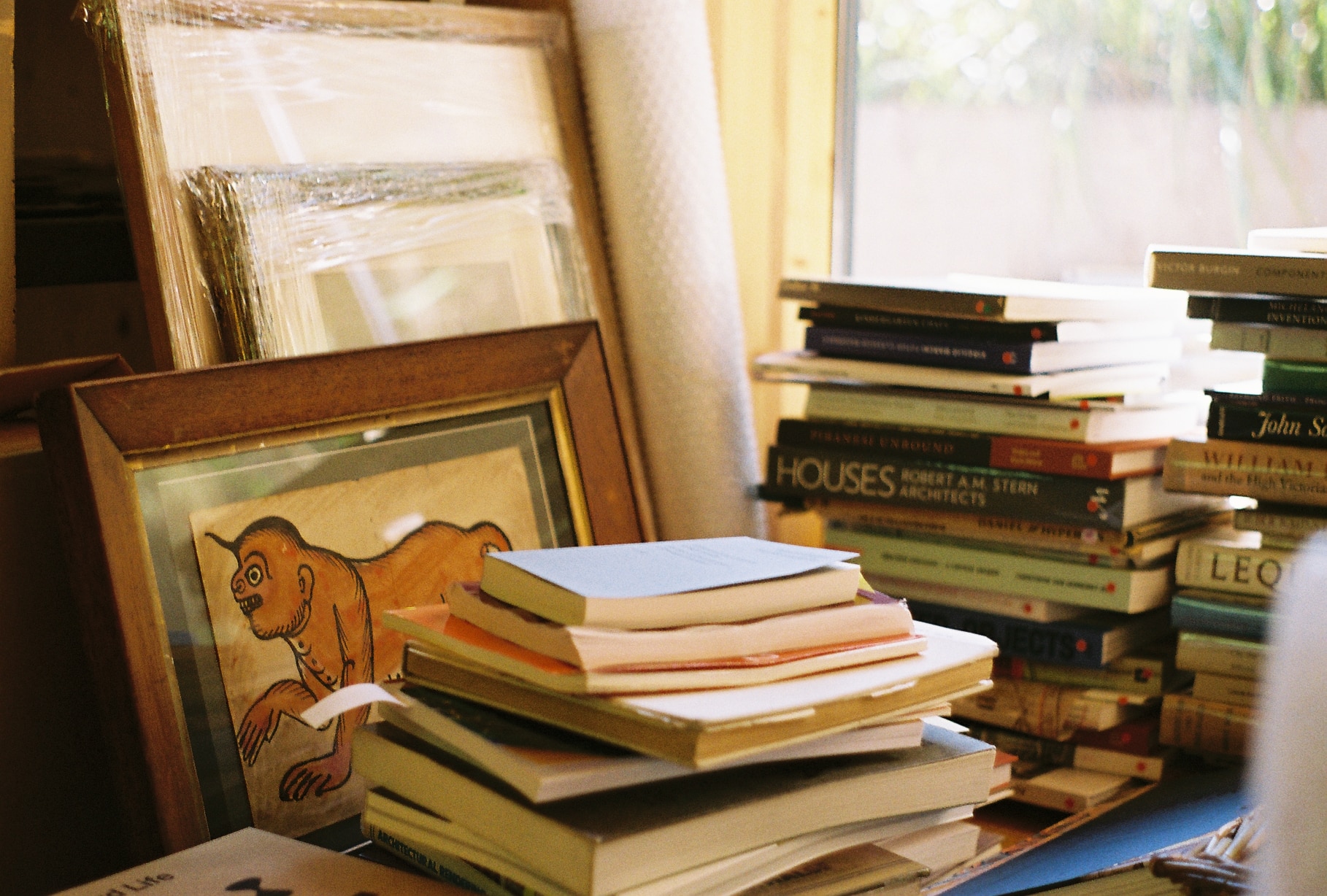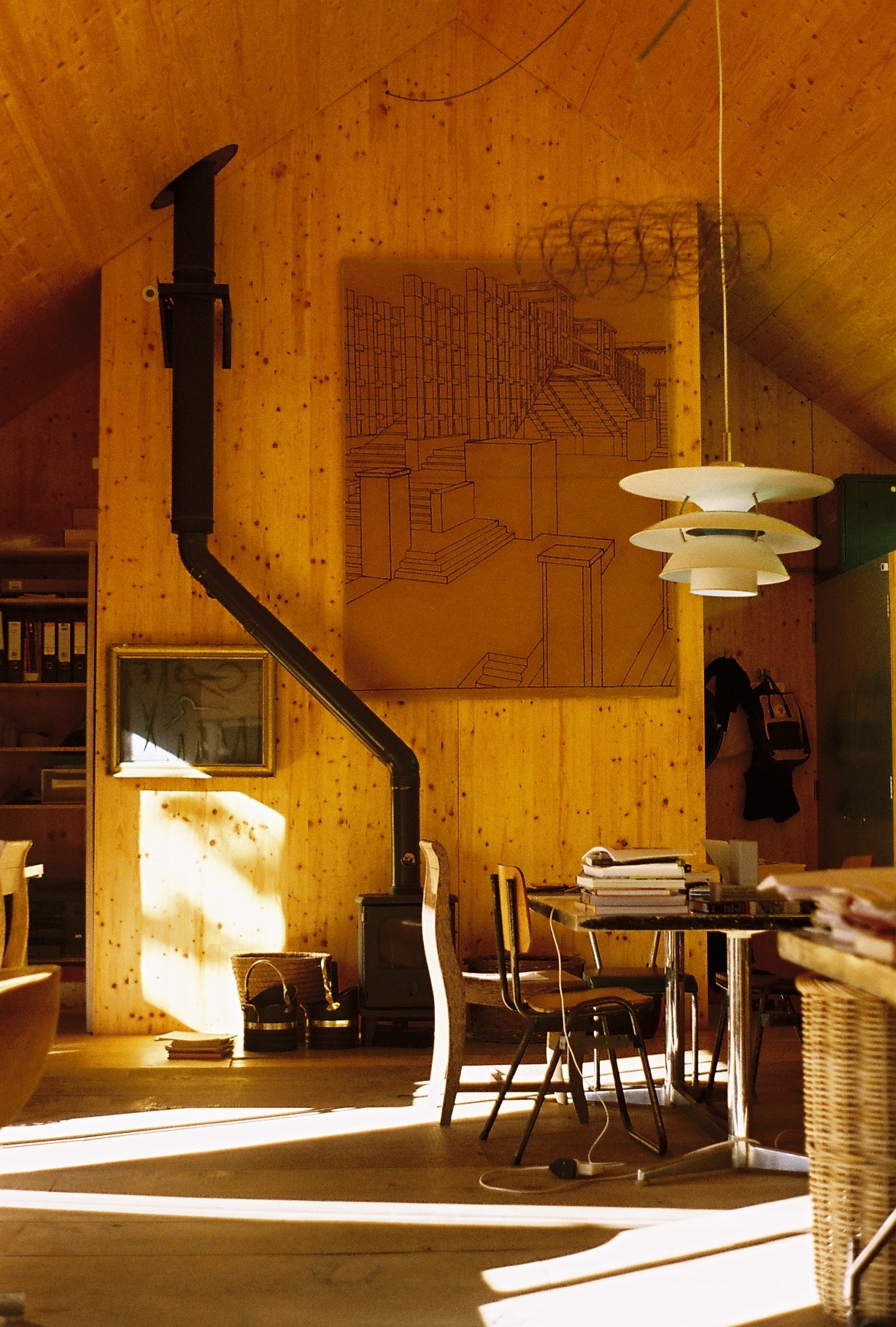Reflections on my Internship

In April 2021, I hesitantly emailed the editors at Drawing Matter to ask if they were currently accepting internship applications. Why would the Drawing Matter team want to burden themselves with an inexperienced and most likely unhelpful American intern? They had no established internship program, Covid-19 cases were on the rise and travel restrictions were not easing. I was expecting no response to my inquiry.
Only a few months later, I found myself quarantined in a shipping container on a small farm in Somerset, England. I had taken a flight from JFK to Heathrow, which, for reasons unknown to me, transported almost exclusively Hasidic Jews. I sat in the back of the plane where I had a full view of the vast network of black cylindrical ‘Hoiche’ hats popping up and disappearing behind the seats. Niall Hobhouse, the director of Drawing Matter, picked me up from the train station at Castle Cary. It was Niall’s open-mindedness and generosity that had made this whole improbable thing a reality. As we drove to Shatwell Farm, home of Drawing Matter, Niall encouraged me to explore the surrounding area but to question what I saw. He explained how in this area of England, the owners of farms are subsidised just for maintaining their land rather than for producing goods. And so, through the car window, one can observe the primary product of these farms: the illusory image of the bucolic English countryside. We then pulled into Shatwell Farm with its laissez-faire land maintenance, industrial machines out in the open, and old farm structures with unapologetically contemporary interventions — a contradiction of everything we passed on the drive there. It soon became clear that Shatwell Farm is possibly the most productive farm in Somerset, producing more architectural knowledge than the county’s combined agricultural output.
A shipping container masterfully converted into a residence was my accommodation for the next six weeks. Niall explained how the container is part of the scholars’ suite with the idea that I could visit the architectural libraries on the farm, also within shipping containers, and bring back books to my container. The bed of the container is elevated about five feet off the floor and can only be accessed by pulling out an old desk on wheels from under the bed and then pulling out the bottom left drawer of the desk which had been capped to function as a step. Left foot drawer, right foot desktop, sit on bed, rotate into sleeping position. The first night, floor to the desk to bed became the battleground where I fought every species of moth, including those yet to be discovered and believed to be extinct. With trash-liner armour protecting my hands and arms, I fought through the night until I had claimed the bed as my own. I slept well.
The morning after I met outdoors with Niall to discuss the logistics of my internship and the possible projects I could undertake throughout my stay. In addition to the other in-quarantine tasks I was given (which felt more like entertainment than work), he suggested that I become familiar with the collection. He explained how I would get my own set of keys and could enter the archive whenever it was empty. Surprised he didn’t bring it up on his own, I asked, ‘how do you handle the drawings?’ He answered by outlining the two opposing philosophies concerning the handling of architectural drawings: the first involves specially trained hands wearing white gloves; the second claims that drawings only get better with touch and use. Niall subscribes to the latter philosophy.

On the third day of quarantine, I entered the archive for the first time. Niall disabled the security alarm in anticipation of my arrival. Once inside, my first move was to remotely roll up the shades covering the skylights. As natural light flooded through the space, I began my self-led tour. As if I wasn’t supposed to be there, I became acutely aware of the security cameras in the room. I saw myself traverse across the room from the camera’s point of view. The hyper self-consciousness produced by the camera’s eye combined with a general lack of confidence limited me to only the most physically accessible material. I only interacted with the smallest boxes and portfolios on the eye-level shelves — the ones easiest to reach and carry to the plan chests. The security footage probably shows me examining drawings, but I was actually focused on finding which method of looking through the boxes and portfolios is safest and most respectful. I first tried moving each drawing to the bottom of the stack until the first drawing I had looked at was back on top; I also tried removing the stack of drawings from its container and then placing the drawings back, one by one, from the bottom up; finally, I tried flipping each drawing over onto its back side, like a book, and then flipping the whole pile back into its container. Even with Niall’s freeing words, these anxieties and experimentations dominated my mind and left little room for focus on the actual drawings. I have no memory of the content within the boxes and portfolios I looked through that first day.
It wasn’t until I opened the notebook cupboard that I lost these limiting inhibitions. The notebooks were familiar objects, not too different from the ones one has in their own home. Even what was on some pages could have belonged in anyone’s notebook: schedules, phone numbers, lists, etc. But for the most part, they contained hundreds of sketches bound together. They are inherently interactive objects that cannot be contained behind glass and that require the hand to be activated. They were designed to be held, opened, and flipped through. In other words, the notebooks make Niall’s philosophy of handling drawings unavoidable. Even white gloves would kill the experience by obscuring the weight and texture of the paper. It is impossible to surround notebooks with protective controls without sacrificing the sensuous aspects of the viewing experience — the auditory and tactile rhythm of flipping through the pages, as fragrances, stored from an earlier time, are released and waft up to the nostrils of the viewer.
I looked through the notebooks of Claude-Martin Goupy, Antoine-Marie Peyre, Álvaro Siza, James Gowan, Adolfo Natalini, and Peter Wilson until the sun beaming through the skylights became noticeably warmer and weaker than it had been. On the way back to my container, I ran into Niall and quickly relayed my first impressions of the archive. I explained how I ended up spending most of my time looking through the notebook cupboard, he replied: ‘The notebooks are the key to the collection’. It’s true, after my success with the notebooks, the rest of the collection seemed to open up to me; that same liberating spirit that I found in the notebooks began to pervade through the rest of the collection. In subsequent visits to the archive, I was able to fully embrace that sense of unfettered exploration that Drawing Matter is trying to cultivate.
I began to notice that even the non-notebook material consisted of drawings that beg to be used and not merely looked at. These are the process drawings of the collection — unprecious artefacts that were created as a means to an end, as a vehicle to generate ideas and solve problems. They are the record of an exchange between hand, paper, eye, and mind; a negotiation that works itself out through a loose syntax of shorthand markings, annotations, erase marks, revisions, smudges, and overlays — producing an unplanned whole that is sometimes unintelligible to an outside viewer. These drawings do not attempt to persuade others with an immersive atmosphere or other pictorial tactics but are bare and personal, almost secret. Some architects have the tendency to discard evidence of these more vulnerable embryonic stages of a project, but Drawing Matter saves these documents from the bin and holds them up to the light, revealing them as something akin to poetry — especially if poetry is something that is not heard but overheard.

Just as these drawings were once tools for making, they should live on as tools for learning. Even the architecture of the archive itself helps demythologise the drawings and situate them within everyday life as accessible and useful objects. The collection is not held within a hermetically sealed vault within some sterile, artificially lit basement. In fact, the door to the archive is sometimes left open to let a gentle breeze in. Very little distinguishes the archive space from the office space across from it: the two spaces mirror each other, they are both sheltered under the same continuous roof, and many objects and activities regularly pass between them. There are drawings and models that are held in the office and ordinary objects held in the archive. In a way, the archive is an office, it is also a classroom, conference room, photography space, exhibition space and zoom background. In other words, the archive space and the actions held within it aren’t so unusual; one quickly becomes comfortable within the archive, and it becomes an environment that works for actual use.
Perhaps most significantly, Drawing Matter has expanded its reach beyond the physical limits of the archive. The collection is not hidden away on a farm in England but is digitised and shared online in new and engaging ways. Put together, drawingmatter.org and drawingmattercollections.com serve as a public resource available to anyone with an internet connection. Most of the projects that I worked on during my internship tested new strategies of online presentation that could appeal to wider or different audiences. We ended up extending the length of my stay by a week so I could finish up a few unresolved projects. The morning before my return flight, I interviewed the carpenter who single-handedly designed and converted the shipping container I had lived in for the past seven weeks. I gave him a tour of his own creation and he was happy to see that it was being used and lived in and not just stored away. After our conversation, I was driven to the train station in a large hay-filled van that had just been used to transport a lamb to the butcher.
